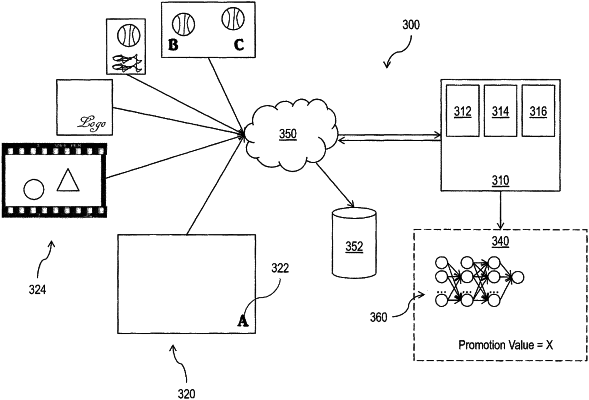| CPC G06N 3/084 (2013.01) [G06Q 30/0201 (2013.01); G06Q 50/01 (2013.01)] | 8 Claims |

|
2. A computer-implemented process, comprising the following steps:
training a deep neural network to determine promotional value for brands using a training data set with visual and audio media having known promotional brand values;
identifying a plurality of digital electronic media files each containing at least one commercial brand indicator, wherein the plurality of digital electronic media files includes at least one visual media file and at least one audio media file, wherein the at least one commercial brand indicator within the at least one visual media file includes at least one logo, wherein a logo recognition application hosted within a computer device uses the deep neural network to detect and identify the at least one logo within the at least one visual media file, and wherein the deep neural network uses a computer vision program to detect at least a size and clarity of the at least one logo within the at least one visual media file, and wherein the at least one commercial brand indicator within the at least one audio media file includes at least one audio brand indicator, wherein the application hosted within the computer device uses the deep neural network to detect and identify the at least one audio brand indicator within the at least one audio media file;
determining at least one context for each of the at least one commercial brand indicators;
mapping each brand indicator context to a feature vector;
mapping each feature vector to an input layer of the deep neural network;
mapping the input layer to a plurality of hidden layers of the deep neural network;
generating a promotion value model by learning weights for each of a plurality of transitions between the layers of the deep neural network, such that the learned weights indicate a relative value between the layers, wherein the promotion value model is configured to determine a promotion value of the at least one commercial brand learned through the deep neural network; and
reporting the determined promotion value.
|